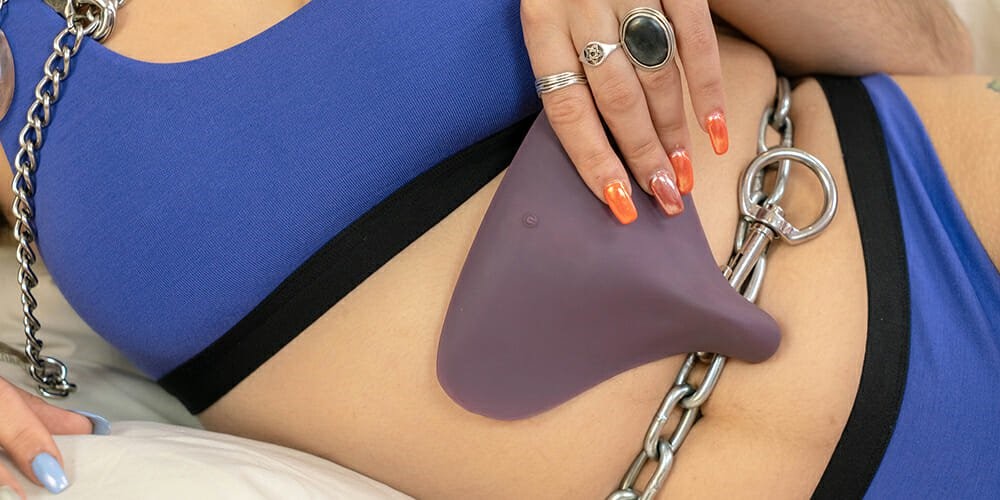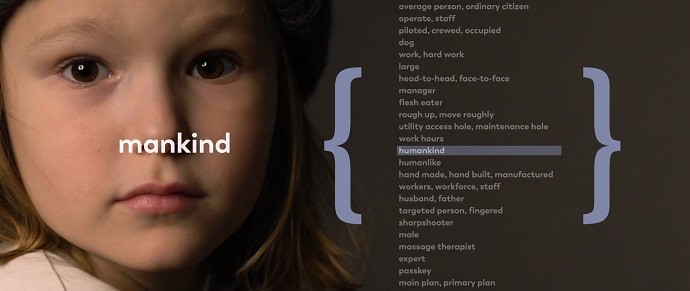Across all categories, it’s important for brands to consider how consumers will identify with their bodies over the coming years and how this will inform communications around physical representation, romantic and personal relationships, and social interactions. Scientific advancements, social media, and identity politics raise questions that unpick our conventional notions of self and community – with questions around gender reseeding everything from child rearing to politics.
Here are five future-facing ways for brands to think about gender, the body and identity:

1. Shapeshifting me
Unlike the static definitions of even twenty years ago, people are increasingly chameleonic and gender cues can change moment to moment depending on mood. For the beauty industry, this has been paramount – with makeup and personal care now standard modes of personal expression for everyone.
For example, The Guardian’s Sirin Kale (2019) wrote about how Gen Z spend hours in their bedrooms perfecting intricate looks to post online – one being an “Error 404-inspired look” inspired by when something glitches online. Milk’s 2017 Blur the Lines activation in collaboration with Very Good Light uses video effects to reveal this malleable sense of self, with blurry profiles that shapeshift from second to second.
How can your brand loosen binary cues and relinquish socially determined structures in favour of personal ones?

2. Weaponized beauty
Female sexuality has historically been demonised and/or purified but is emerging as a powerful and acceptable tool for dislodging and usurping pre-established power structures. Since 2016, women ferociously began adopting stereotypically female cues as if they were war paint. From pussy hats to lipstick, women are leaning into their own gendered ways to signal prowess and authority.
Lipslut’s line of politically charged colors frames makeup as a political tool, whereas the Milk x Wu-Tang collaboration signals lipstick as armor – while Alexandria Ocasio-Cortez’s red lips, painted nails and hoops are unashamedly nonconforming. As voices cut across socioeconomic hierarchies via social media and grassroots initiatives, brands must also dispose of established narratives and cues of power.
How can your brand signal strength and authority by adapting feminine cues?

3. Nurturing sexuality
Frank discussions about personal histories emerge alongside discussions about self-care and self-love, with categories like sexual wellness going mainstream and tampons, moon cups and even sildenafil (a.k.a. Viagra) all on mail order. Emergent sexual identity eschews the body as seen through a pornographic, stereotypically male gaze, and explores more personalized rituals that seek to nurture and indulge everyone.
For example, the Plus One vibrator places sexual pleasure at the forefront of self-care, seeking to democratize sex toys in the name of stress relief. Enby – the new gender free sex toy – is uniquely shaped for everyone to enjoy. Fur’s Fur Oil is specially formulated to smooth pubic hair and Queen V is a one stop shop for most things vaginal.
How can your brand communications encourage nurturing and pleasurable moments?

4. Educational shuffle
Social media, language and even architecture constructively and collectively dismantle systems of oppression by employing accountability and transparency. Gillette controversially did this by questioning its own heritage with “We Believe: The Best Men Can Be” (2019).
The Gender Knot Podcast encourages men and women to talk productively about being better allies. ElaN Languages introduces an Unbias button that translates gendered words into gender-neutral ones across languages. Stalled! redesigned bathrooms to be more social, gender fluid sites in efforts to minimise safety concerns for all.
How can your brand be an educational tool for discussions about gender?
5. Biological editing
Advancements in gene editing, organ printing and in the OR mean the body is open to increasing modification and personalisation, upending conventional notions of beauty and identity. As missing or engineered limbs and post-surgical sutures become ‘normal’, one’s biological gender is a starting point for their future self.
For example, incels undergo cosmetic surgery to achieve hyper masculine bone structure. A non-surgical intervention like TransTape treats the body as something that can be systematically reshaped – much like corsetry. More speculatively, the alternative limb project, creates prosthetics limbs that inspire dialogue about the human body and its future adaptations.
How can your brand imagine the body as a vehicle to meet the future?
In summary, remember that gender is personal, female sexuality is powerful, personal pleasure is important, as is educational discussion and that sometimes gender is just rearranging parts. Approaching the gender minefield can be daunting but if you remember one thing, it’s that hierarchies are history and making room for multiple voices is paramount.

By Hannah Hoel, semiotician and cultural analyst



